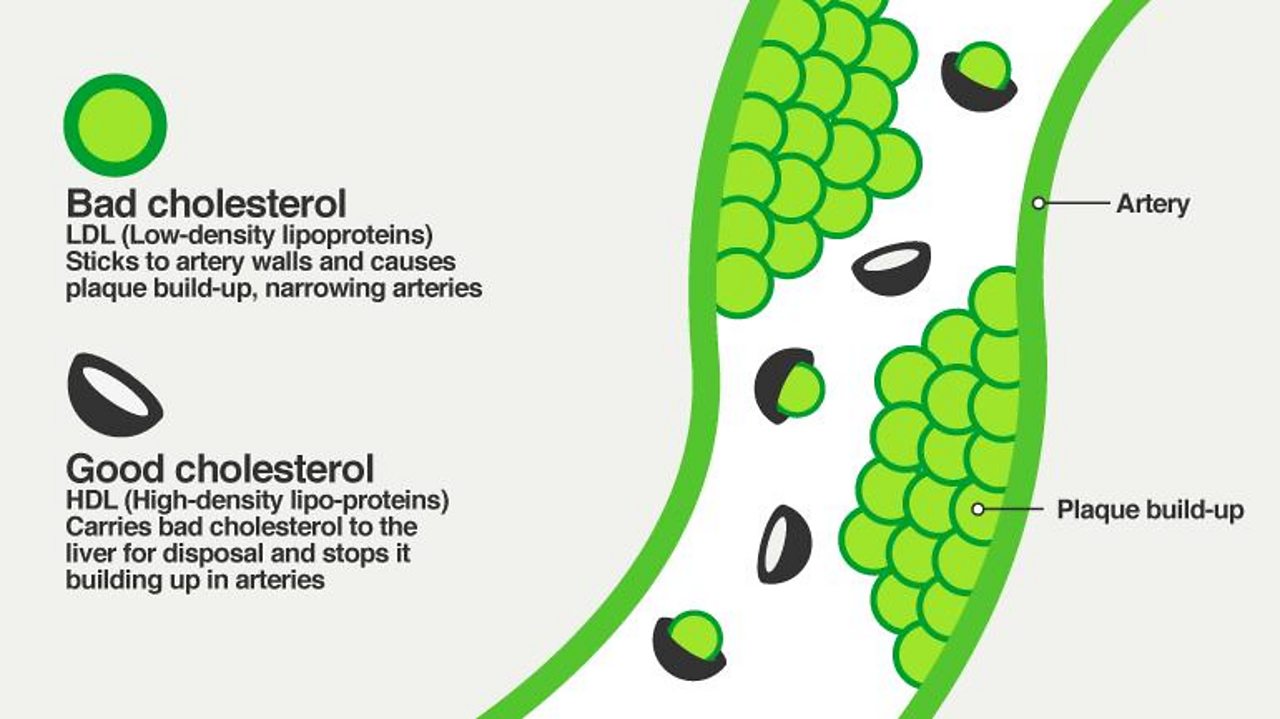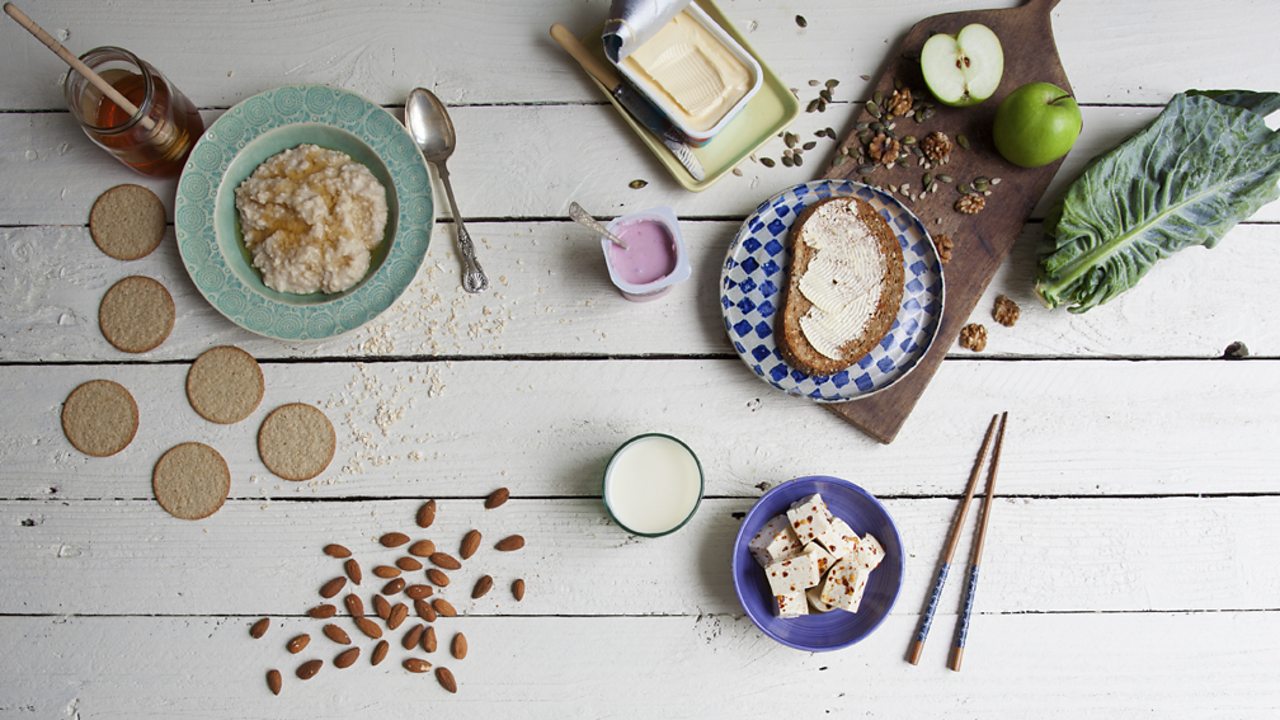MY WORLD OF TRUTH
Saturday, 6 July 2019
WHAT TO EAT TO CUT DOWN ON CHOLESTEROL.
Eating oats, green leafy veg, nuts, seeds, beans and soy milk can help lower LDL (bad) cholesterol, according to research by Dr David Jenkins of the University of Toronto. His Portfolio Diet involves eating these foods as part of a calorie-controlled vegan diet low in saturated fat and salt and high in fibre, fruit and veg.
People with high levels of bad cholesterol are often advised to follow a low-fat, low-cholesterol, high-fibre diet, which has been shown to reduce cholesterol levels, but only by a small amount.
The problem is that most of us make more cholesterol in our bodies than we consume in food. So is following the Portfolio Diet while taking regular exercise a better way to tackle the problem?
What is cholesterol?
Cholesterol is a fatty substance (a lipid) that can be found in some foods but is also produced by your liver. It is vital as it is used to make oestrogen, testosterone, vitamin D and other essential compounds, and it is carried in your blood by proteins. There are two types of cholesterol.
Low-density lipoprotein (LDL) cholesterol (associated with saturated fat) is 'bad' because it is deposited in the walls of arteries and causes hard plaques to build up. These can cause blockages, resulting in angina, heart attacks and stroke.
High-density lipoprotein (HDL) cholesterol is 'good' because it carries LDL cholesterol to your liver, where it is disposed of. A high ratio of good to bad cholesterol is best for your health.
About eight million people in the UK take cholesterol-lowering drugs known as statins to reduce their LDL levels and risk of cardiac problems.

What can I eat on the Portfolio Diet?

Dr Jenkins' dietary portfolio involves eating one or more of the following four foods daily while sticking to a 2000-calorie diet low in saturated fat and salt and high in fibre, fruit and veg. If you eat the recommended amount of only one of the four food groups, research shows you could reduce your blood cholesterol by 5 to 10 percent, but this increases significantly if you eat all four in combination.
Oats
Oats contain types of soluble fibres, including 'beta-glucans'. These stick to cholesterol-rich bile acids in the stomach and stop cholesterol from being reabsorbed into the body, resulting in it being eliminated instead. About 3g of beta-glucan daily is typically needed to reduce cholesterol to safe levels. One 30g portion of oats will provide 0.75g of beta-glucan, so about three servings of oats are needed each day (that's a bowl of porridge plus either six oatcakes or two slices of oat bread). Other soluble fibre-rich foods include barley, oatbran, psyllium, apples, strawberries and aubergines.
Almonds
Almonds reduce bad cholesterol while maintaining good cholesterol, thanks to their monounsaturated fats. They contain antioxidants (Vitamin E and polyphenolics), which can help stop the oxidisation of cholesterol (which makes it stick to arteries). Other nuts have a similar effect, including peanuts, pistachios and walnuts. Research shows that a 45g daily almond snack (two handfuls) is enough to make a real difference for some, but even a daily handful (23 almonds) can help.
Plant stanols
Plant sterols and stanols (phytosterols) are found naturally in green leafy vegetables, vegetable oil, nuts and seeds. They work by mimicking cholesterol and competing with it to be absorbed from your stomach. This means less cholesterol and bile acid (created when cholesterol is processed by your liver, it helps you process dietary fats) go back into your system. Your body then needs to use more cholesterol to make more bile, which lowers your blood cholesterol.
It's almost impossible to eat enough sterols and stanols from plants alone, but it can be done by eating foods such as a plant sterol-enriched margarine or yogurt. You need about 2g sterols and stanols a day, which is two to five teaspoons of margarine with added plant sterols, or one yogurt. It's unlikely that people with healthy levels of cholesterol will benefit from such fortified foods.
Soya protein
Soya and other bean proteins appear to help reduce the amount of cholesterol made in your liver, studies show. As soya protein is also low in saturated fat, it's a good replacement for foods with a high amount of saturated fat, such as red meat. Consuming 25g of soya protein a day (about 300g of tofu or 600ml of soya milk) can lower low-density LDL cholesterol by five to six percent, research has found. However, 50g per day of plant protein is recommended, and this can come from lentils, beans and chickpeas too.
How much saturated fat is too much?
No more than a third of your energy should come from fat, which means a maximum of 70g per day for a woman and 90g for a man. Saturated fats should make up no more than a third of this, so a maximun of 20g for a woman and 30g for a man.
Saturated fats are found in animal products, such as red meat and dairy, and foods that are made with them, such as pastries, cakes, chocolate and biscuits. They're also found in some plant foods, including coconut oil and palm oil.
To cut back on saturated fat, replace foods that are high in them with foods containing more unsaturated fat, such as nuts, seeds, olive oil and rapeseed oil. If you're not following the vegan Portfolio Diet, oily fish such as salmon and mackerel is a good alternative to red meat.
Is the Portfolio Diet right for me?
Recent research from Toronto University has shown that the Portfolio Diet can improve blood pressure, decreasing inflammation and reduce the 10-year risk of heart disease. However, people taking cholesterol-lowering drugs were excluded from the original study, so it is not known whether the diet could produce the same level of cholesterol reduction in those on medication.
posted by Davidblogger50 at 01:28

0 Comments:
Post a Comment
<< Home